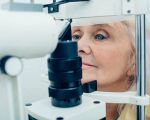- 1-Understanding-Progressive-Myopia
- 2-Primary-Causes-of-Progressive-Myopia
- 3-Methods-to-Control-Progressive-Myopia
- 4-Case-Studies-and-Personal-Experiences
- 5-Professional-Insights-and-Resources
1. Understanding Progressive Myopia
Progressive myopia, often called nearsightedness, is a condition where the eye’s refractive power increases over time, causing distant objects to appear blurry. Unlike stable myopia, progressive myopia worsens as the eyeball elongates, typically during childhood and adolescence. This progression can lead to higher prescriptions and an increased risk of eye complications later in life.
Recognizing progressive myopia early is essential for effective management. Parents and individuals should be aware of common symptoms, including frequent squinting, headaches, and difficulty seeing distant objects clearly.
1.1 Why Monitoring Progressive Myopia is Important
Unchecked myopia progression can contribute to serious ocular issues such as retinal detachment, glaucoma, and cataracts. Hence, controlling the rate of progression is a key goal in preserving long-term vision health.
2. Primary Causes of Progressive Myopia
The development and progression of myopia are influenced by a combination of genetic and environmental factors.
2.1 Genetic Predisposition
Children with myopic parents are more likely to develop progressive myopia. Specific genes affect eye growth patterns, predisposing individuals to elongation of the eyeball.
2.2 Environmental Influences
Extended near work activities such as reading, using digital devices, and insufficient outdoor time contribute significantly to myopia progression. Studies suggest that spending more time outdoors exposes eyes to natural light, which may slow the elongation process.
2.3 Visual Stress and Poor Lighting
Poor lighting conditions and visual fatigue can exacerbate eye strain, indirectly affecting myopia development.
3. Methods to Control Progressive Myopia
Fortunately, several strategies have emerged to help slow down or control progressive myopia effectively.
3.1 Optical Interventions
Specialized glasses and contact lenses, including multifocal lenses and orthokeratology (overnight corneal reshaping), have demonstrated success in managing myopia progression by reducing eye strain and controlling focusing mechanisms.
3.2 Pharmacological Treatments
Low-dose atropine eye drops are increasingly used to slow myopia progression. These drops reduce the rate of eye elongation with minimal side effects when properly supervised by an eye care professional.
3.3 Lifestyle and Behavioral Changes
Encouraging outdoor activities, taking frequent breaks from near work, and optimizing lighting conditions can substantially reduce visual stress and the progression speed of myopia.
4. Case Studies and Personal Experiences
Consider the story of a teenager whose myopia rapidly worsened due to excessive screen time and lack of outdoor exposure. After consulting with specialists and adopting a combination of atropine drops, orthokeratology lenses, and a structured outdoor schedule, the progression slowed markedly over two years. This real-world example underscores the importance of early intervention and comprehensive management.
Similarly, many patients report improvement by integrating lifestyle changes alongside professional treatments, highlighting that controlling progressive myopia is achievable with dedication and guidance.
5. Professional Insights and Resources
Managing progressive myopia requires personalized care and regular monitoring. Eye care professionals are equipped to recommend the best treatment combinations tailored to each patient’s needs.
For individuals seeking reliable products and expert advice, Eye Docs offers an extensive selection of myopia control solutions and professional consultation services. Their guidance helps ensure effective and safe management of progressive myopia, preserving vision quality for the future.








